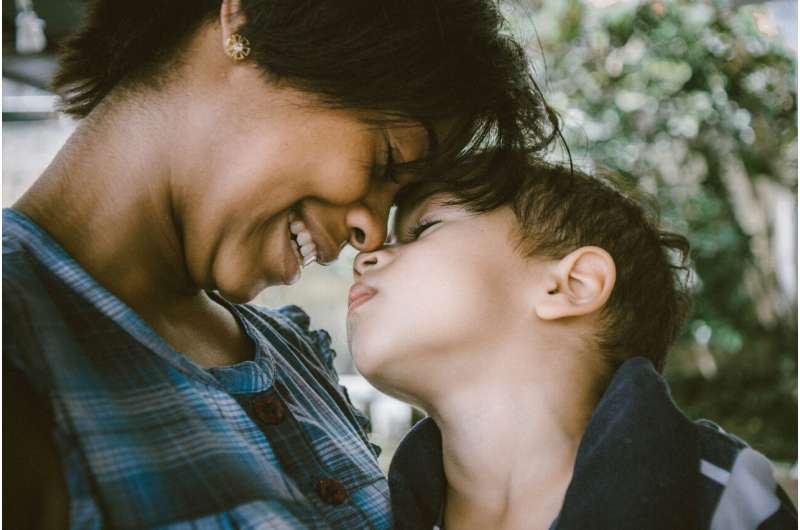
As children head back to school, families are once again facing a September of uncertainty. This worry is compounded by depressive and anxiety symptoms in children and adolescents that have doubled in the past 18 months.
Our team has been studying the mental health of children and families since the start of the pandemic to develop strategies that support those who are struggling. Getting kids back in the classroom is an important step. However, we must not forget the well-being of families, as children are most successful when they are jointly supported in both the classroom and at home.
Noticing, validating and managing emotions is an important part of family health and wellness. Emotion coaching is a simple strategy parents can use with their children and loved ones.
How the pandemic got in the way
Our family science research group in southern Ontario has recently published three studies highlighting how the pandemic has interrupted relationships and mental health in children and families. Findings were based on an international sample of 549 families and 1,098 children.
We found that pandemic stress falls into one of three categories: economic stress (things like job loss, debt problems), relational stress (showing up, for instance, as more hostility or withdrawal between family members) and pandemic-specific stress (seen in things like being overwhelmed by the news cycle). In other words, many parents are simply too stressed to provide emotionally supportive responses during parenting exchanges. That said, not all families have been affected equally.
Among the parents we studied, we found that women with a history of early life adversity were the most vulnerable to mental health problems. But men with a history of early life adversity were still at greater risk for mental health problems than men without such early adversity.
Parents experiencing mental health challenges creates a ripple effect across the entire family unit. It predicts higher mental health problems in children, psychological distress in parents and parenting challenges.
Even within the same family, one sibling may be struggling more. In a sibling comparison study, forthcoming in the peer-reviewed journal Developmental Psychology, caregivers reported having more parenting challenges over time with the child who had higher levels of anxiety, depression and anger at the start of the pandemic.
This is an important and unique finding since it describes how COVID-19 stress “gets inside the family,” highlighting and widening differences between siblings. This creates an added challenge for parents.
What is emotion coaching?
Emotion coaching is a pattern of communication that emerged from the work of psychologist John Gottman, and has since become embedded in many types of therapy.
That said, it’s not complicated and anyone can do it.
In its simplest form, emotion coaching is a two-step process that parents can use when their child is distressed.
1. Parents first validate the emotion. This requires that they identify the emotion by saying something like: “I understand you might be feeling worried …” and then by explaining the emotion: “… because it’s almost September, because you are worried about what back to school will look like and because you have been home for so long.” This conveys to a child that their feelings make sense, that they are not wrong or bad for feeling the way they do, and that their parent understands them. To remember this step, parents can remind themselves that you’ve got to feel it to heal it.
2. After validating the emotion, parents provide support. This may be emotional support that is comforting, reassuring and hopeful. It could also be a sign of togetherness, in saying something like: “I will be here with you every step of the way this fall.”
Next, practical support can take the form of distraction, redirection, problem-solving or encouragement. If a child is focused on the uncertainty of September, parents may suggest doing a fun activity together. If an adolescent is refusing school, parents could provide encouragement or set limits and reinforce expectations.
The important thing is the order of emotion coaching steps—first a parent helps their child to feel the emotion (validation), and then the parent helps their child to feel better (support).
Not only will emotion coaching help calm the emotional storm in the moment, but it will also teach children how to manage their own emotions in the future.
Parents’ own emotions
Children transitioning back to school will likely require additional support. Emotion coaching is not complicated, but it can be very difficult for parents to respond with patience and empathy when at their wits end.
Parents can manage their own emotions by seeking professional support by going into therapy, accessing online mental health materials or taking care of their mental health with activities like exercise, healthy eating and sleep routines.
We also recommend that parents take time to talk with their children before school starts. For an anxious child, this might be five minutes of validation and support each day. For another child, checking in occasionally may be enough.
To quote a shorthand version of Mr. Rogers’s philosophy, “If it’s mentionable, it’s manageable.” There will undoubtedly be a lot to mention this fall.
Dillon Thomas Browne, Heather Prime, Jennifer Jenkins, Mark Wade, The Conversation

